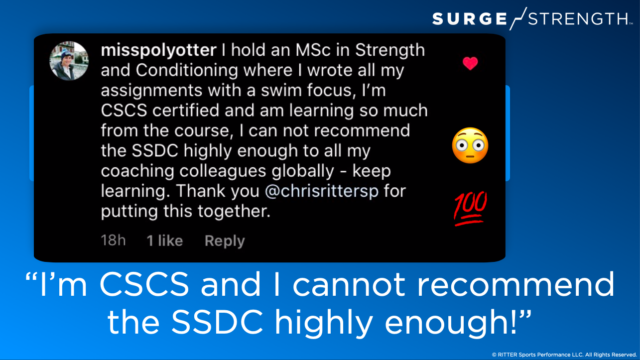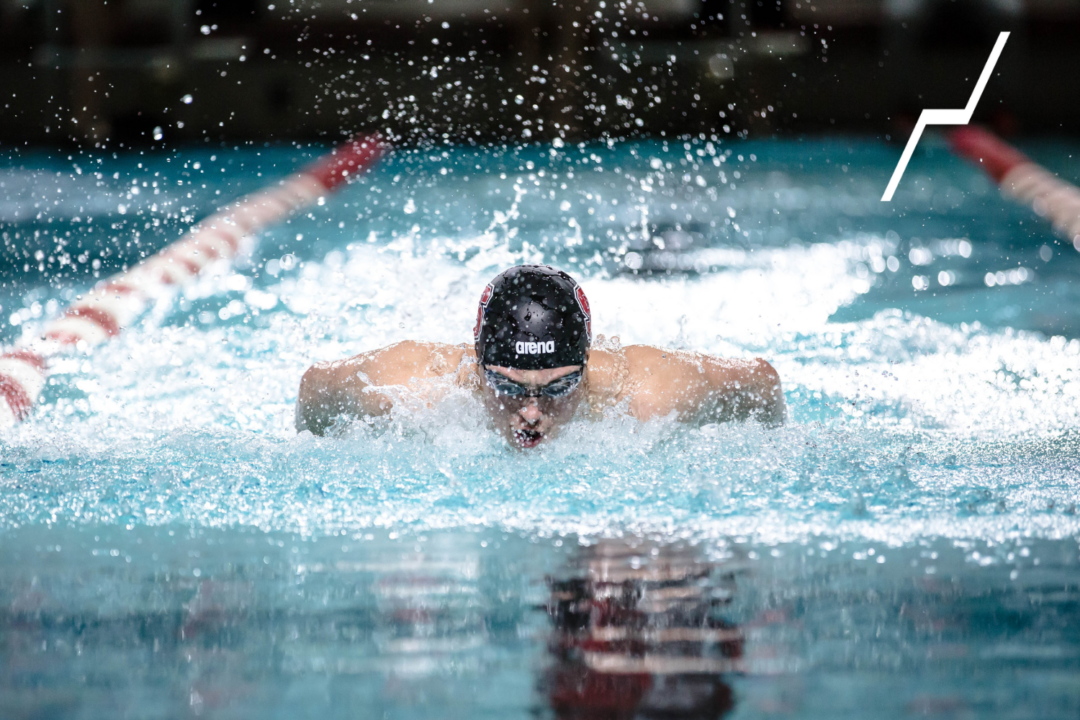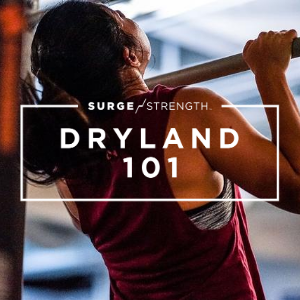Conducting a successful post-swim dryland training session can be tricky if you’re not aware of certain variables in your workout. In-person training for both swimming and dryland is too often cut short due to a growing number of restraints. Some coaches have split up their training days between the pool and dryland. Some coaches are just doing in-person swim practice while opting for virtual dryland. Others need to combine dryland and swim practice in order to account for other restraints. Pool-time remains the priority for swimmers. However, there should always be room for dryland, even when sessions are shortened. How to go about this depends on who you are coaching and how your dryland is structured.
But first, let’s define some terms:
Function Exercises: Training movements that activate key muscle groups, improve athleticism, increase mobility, and prime the body for dryland
Bracing Exercises: Training movements that activate the entire trunk of the body and focus on improving the ability of core activation and stamina
Static Circuit: Exercise segments performed in place involving multiple types of stretches with the goal of improving mobility, flexibility, and athleticism
Dynamic Circuit: Exercise segments that are performed while moving across the floor and using multiple types of stretched in order to improve mobility, flexibility, and athleticism
Let’s discuss 4 practical ways to set up a 30-minute post-swim dryland training session:
Function + Static Session for Post-Swim Dryland Training
The function + static structure is one that is used to help jump-start the athlete’s recovery process. It breaks down into a 10-15-minute functional circuit, then a 10-15-minute flexibility training circuit. This model allows coaches to pull from their movement assessments. With this, they can determine where to focus on better movement quality. Typically, coaches use the back half of this dryland session to work on opening the hips and shoulders while cutting down on the need for space. This includes stretches for muscles used in pulling motions, such as the lats. However, the static component of this session is more than just holding stretches; It is implementing ways to develop better movement patterns. This static structure also helps swimmers to recover from a hard swim practice.
This set-up is perfect when your team has other in-person or virtual dryland sessions throughout the week. It also works well when you are nearing the end of a season or injuries are occurring. The function + static method is also a great fit for dryland beginners. Developing athletes may need to start here before diving into a strength phase. The main benefits of this dryland model are gaining better body positions, preventing injuries, and reducing soreness.
Function + Dynamic Session for Post-Swim Dryland Training
This model is similar to the function + static model but includes dynamic movements rather than static stretching. The SURGE Strength Dryland Certification Curriculum recommends this training structure to 10&unders or the 11-14-year-old age ranges because it keeps younger athletes engaged. Dynamic exercises are great for developing body awareness, motor control, and coordination. Think of them as the prerequisite to gaining strength. This model also keeps dryland engaging for children with shorter attention spans. For older swimmers, this model is best reserved for dryland sessions before a swim practice that will function as a primer for the workout.
Function + Brace Session for Post-Swim Dryland Training
A function + brace session consists of a 10-20-minute, post-swim stretching session; followed by a 10-15-minute brace segment. During the first portion, the session looks similar to a function + static modality. The second half focuses on core strengthening via bracing exercises. Even after a hard swim practice, athletes will be able to perform well with a bracing circuit. Function + brace dryland are great opportunities to safely sneak more core work and corrective exercises into a dryland program.
Function + Strength Session for Post-Swim Dryland Training
The function + strength dryland combo is popular when other dryland opportunities are unavailable. If you only have pool access for an hour, but the practice is usually an hour and a half, we recommend adding the Function + Strength Session onto the end of practice. The same goes if COVID-19 restrictions allow the team to meet at the pool, but gyms are still closed, and virtual dryland is not an option. These sessions start out with a 10-minute functional circuit. Then, finish with a short strength, power, or strength-power segment.
Function + strength dryland pairs best with a light to moderate swim practice. Athletes may lose the benefits of training power if they are fatigued from a hard swim practice. Your strength segment may quickly turn into conditioning if rest periods are too low and volume is too high. Strength segments need to be adjusted to match the work expended in the pool. This is why it is important to conduct the majority of strength training elsewhere in the program. The post-swimming strength training is perfect for working on weak points and supplemental strength gain.
Conclusion for Post-Swim Dryland Training
In an ideal world, dryland sessions are not the only form of land-based training for swimmers. But, during times when dryland outside of practice time is not possible, this structure makes a perfect substitute. The post-swim dryland is also a great way to bring the team together at the end of practice. That way, coaches can conduct safe, hands-on coaching. However, it’s important to keep in mind that most athletes need a periodized strength training program in conjunction with these short dryland sessions, and these act as a substitute when other constraints are happening. And, there are of course exceptions for beginners or athletes who don’t have developed motor coordination for strength training.
But in such uncertain times, having 30 minutes of dryland at the end of your training session can still produce better athletes and faster swimmers.
JOIN OTHERS FROM AROUND THE WORLD THAT ARE
BECOMING SURGE STRENGTH DRYLAND CERTIFIED (SSDC)

ENROLL NOW FOR FREE IN THE SURGE STRENGTH ACADEMY
BECOME SURGE STRENGTH DRYLAND CERTIFIED (SSDC)
BUILD BETTER ATHLETES TO GENERATE FASTER SWIMMERS
Courtesy of SwimSwam’s exclusive dryland training partner, SURGE Strength.
SURGE Strength, a strength training brand created by Chris Ritter, CEO of RITTER Sports Performance, aims to build better athletes and faster swimmers through dryland programs, and coaching education.







